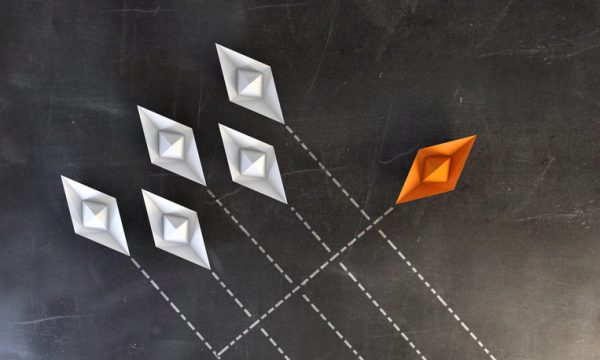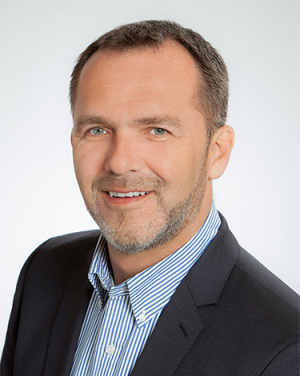
Invetech is a full-service provider of product realization services with a focus in healthcare markets. The company provides contract manufacturing and engineering consultancy support for diagnostics companies ranging from startups to multinational companies.
In a Q&A with MedCity News, Invetech’s President Andreas Knaack talked about some of the evolving healthcare trends that these companies face, particularly the rise of decentralized healthcare, the aging baby boomer generation and with it, the rise of chronic diseases.
What do you see as the biggest trends and environmental changes impacting the diagnostics industry in general, and startups in particular?
With the aging population, we are experiencing continued growth of chronic diseases, and when you put those two together it leads to ever-increasing healthcare costs. As a result, we are also seeing the decentralization of healthcare and the emergence of personalized medicines. The rise of retail drugstore clinics, such as CVS Health’s Minute Clinic, reflects the decentralized healthcare trend. They are providing different kinds of diagnostics services to serve customers and patients better. Startups often aim for point-of-care transformation, so they need to understand what’s happening in these environments. This trend of decentralization is further complemented by precision medicine to better serve patients.

Andreas Knaack
When you think of startups and big players in diagnostics, there are two ways you can compete and win: either by enabling higher diagnostic confidence; or by achieving higher workflow efficiency, particularly through digital integration and an intuitive user experience.
How do these trends call for different product development approaches?
Ultimately it comes down to clever technology not being enough anymore. Companies need to truly understand the pain points their diagnostic device is supposed to address and serve well, whether the user is a scientist, a clinician or a lab owner. They need to understand that these users and personas have different needs and creating a great product experience for each user is essential to commercial success. We can deliver much better outcomes by immersing ourselves into the entire workflow that our device will be used in, not just the immediate application of creating diagnostic results.
The trend of decentralization is putting certain demands on diagnostics instrumentation and solutions. Younger companies must understand what they can deliver beyond – or faster – than – what the big players can.
What are the biggest challenges facing diagnostic startups in achieving a differentiated product offering?
Many of the startups we work with struggle to fully understand the end user’s needs — they particularly struggle with being broad and deep enough to address them, simply due to capacity constraints. They often have the science and engineering knowhow, but they need to understand the entire ecosystem their solution will be used in, and therefore need to spend a lot of time in customer and end-user environments. We call this ‘going to Gemba,’ a Japanese word that means going to ‘the real place’.
Add to that the burden of regulatory requirements. A startup has limited capacity to serve all that, and a limited time to build all that capability by themselves. That’s why it is important for startups to recognize what they are good at and where they may need support. How much of these capabilities do they really need to build themselves? Knowing when it’s smarter to leverage a partners until they can, or need to, build such capacities themselves, is important.
For example, one startup we are working with is very strong on the science and medical side, and that is where they initially put the emphasis. They built a fabric of capabilities on that their science, medical capabilities and digital technologies. At the same time, they were creating a company that required capability to design instruments and consumables. They recognized that building these capabilities and capacity by themselves would take too long and be too risky, so they decided to outsource this part and partnered with us.
In order to gain full visibility over their strengths and capabilities versus their weaknesses, they created a map of all the skills they needed, and carefully selected those that are core to the company. With the mapthis exercise, they could make strategic decisions about what to focus on themselves, and where to look for support externally.
I recommend that startups do such a mapping exercise of the skills and demands of their diagnostic product development journey to identify– what do they need tocan do internally and where it’s smarter to outsource, even if only for a period of time.
It’s important for young companies to consider temporarily outsourcing certain skills so they have time and the capacity to focus on areas where they have a skillset, while also having the opportunity to learn from their outsourcing partners.
From your experience, what are some ways for diagnostics startups to foster innovative thinking?
Where we see particular differentiation between a startup and an established multinational is the need for ultra-fast value creation. Startups can, and must, be faster than their often much bigger peers. They need to seek the right partners that balance their skill sets. Delivering a more sensitive antibody is important, but in most cases that is not enough anymore.
Startups, just like large players, need to be thinking about how they are helping their customer or their customer’s customer reduce healthcare costs. Otherwise, where is their place in the value system? ‘What value am I creating in the healthcare system to reduce costs?’ For me, it is very important for startups to understand the user environment, not just their technology. Startups typically – and fortunately – don’t need to worry about what their disruptive solutions means to any legacy parts of their business, and this gives them a degree of freedom that large players often don’t have.
How does Invetech work with clients to arrive at breakthroughs and deliver differentiation through innovation?
We’re privileged to work with clients that are bringing truly ground-breaking products into the market. Each client is unique and for us as a full-service product realization partner, it’s about co-creating solutions with our clients, working as an extension of their team and sharing their product realization journey. Our approach, which combines human-centered design, agile product development, strategic program management and proprietary modules, is designed to get to the best product outcome for our clients.
At any given time, 30 percent to 40 percent of our business is with startups with another 40 percent coming from multinationals. The startups we are working with are at various stages of their development from product conception to product launch and ongoing support. To deliver value to our clients as a service company, we need to help them understand the end user.
One of the first things in any project we do is take early concepts into the field and test them with real users. This not only reduces risk and ensures usability, but really challenges early design concepts through uncovering users’ pain points and discovering real problems by fostering an open dialogue with the different personas. Working this way enables us and our clients to understand the end user environment and this, in turn, leads to product innovation.
We are differentiating from our competitors by having made experience design capability a key part of our end-to-end product realization offering. It’s an overarching approach all the way from front-end experience design capabilities over industrial design, product development and engineering through to contract manufacturing and in-market support capabilities.
Picture: Getty Images, Eonren






